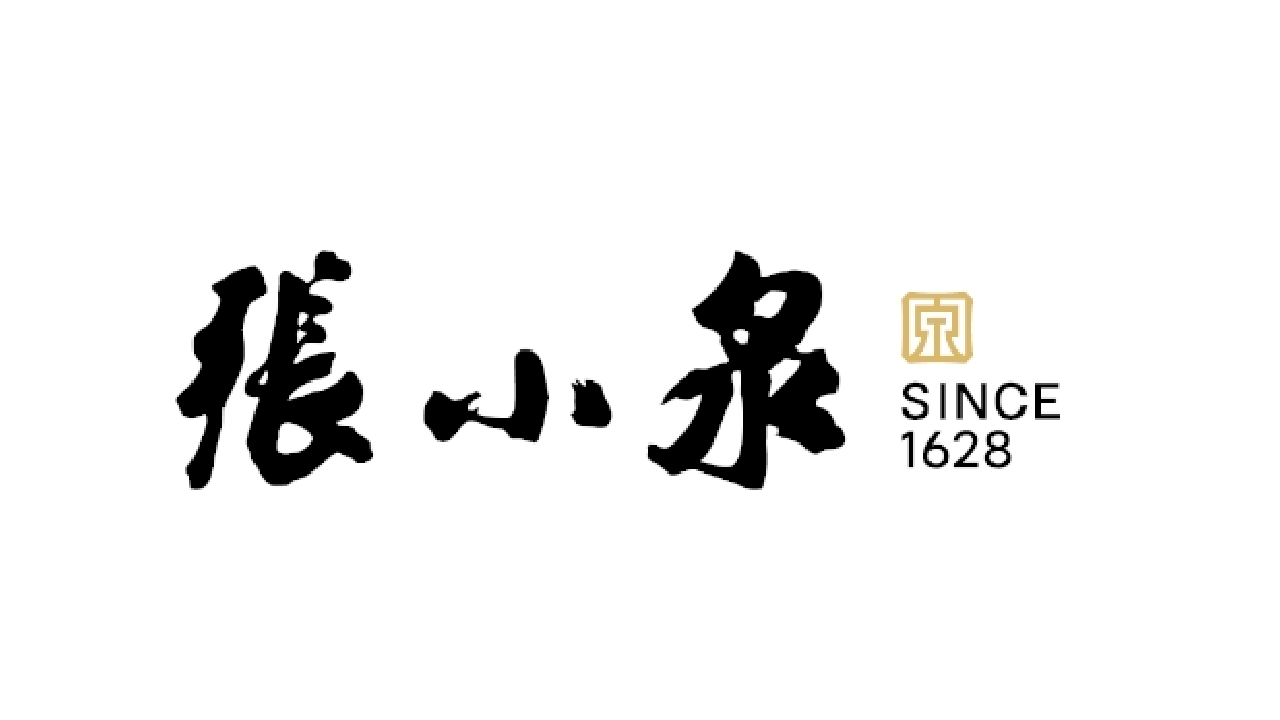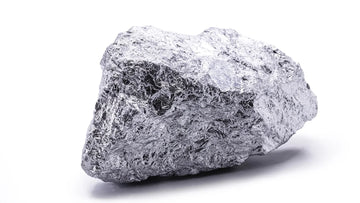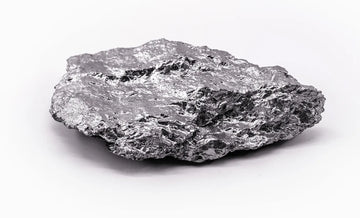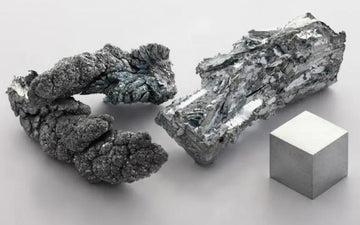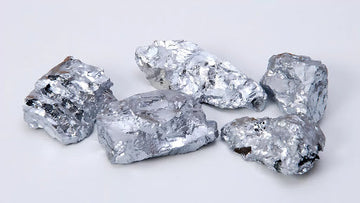In the world of kitchen knives, there's a metal called vanadium that does important work even though we rarely talk about it. It doesn't get as much attention as carbon or chromium, but without vanadium, many of our favorite knives wouldn't cut as well or last as long. This metal helps make knives sharper and more durable in ways that matter when you're chopping vegetables or slicing meat.

What Is Vanadium?
Vanadium is a metal that looks silvery-gray, much like steel but with its own unique properties. You won't find pure vanadium in your kitchen, but small amounts of it hide inside your knife's steel. It's element number 23 on the science charts, sitting quietly between titanium and chromium.
This metal is quite hard and maintains its structure under pressure. It melts at 1,910°C (3,470°F), which is important when knife makers mix it with other metals to create steel for blades.
Most kitchen knives contain between 0.1% and 4% vanadium - not much, but enough to make a real difference in how the knife works. Think of it like garlic in cooking - a small amount transforms the entire dish.
How Vanadium Makes Knives Better
Forms Hard Carbides for Wear Resistance
When knife makers add vanadium to steel, it combines with carbon to create tiny particles called vanadium carbides. These carbides are extremely hard - about 2800 on the Vickers hardness scale(This far exceeds the maximum value of 70 HRC on the Rockwell C hardness scale.), which is harder than most abrasives you'll encounter in the kitchen.

A knife with 3-4% vanadium wears down 60-70% slower than regular carbon steel knives. This means cutting through 500+ vegetables before needing to sharpen again, compared to perhaps 200 with a conventional knife.
A knife maker once told me, "Vanadium is like adding tiny diamonds throughout the edge of your knife. They stand guard against wear, keeping your edge sharper much longer."
Refines Steel Grain Structure
Vanadium makes the internal structure of steel finer and more even. It limits grain growth during heat treatment to just 10-15 micrometers, which is much smaller than in regular steel.
This refinement allows knife makers to create thinner, sharper edges (15-17° per side) without microchipping during tough tasks like processing bone-in meats or hard vegetables. The edge can be both sharp and durable at the same time.
Improves Heat Treatment
When knife makers heat and cool steel to make it hard (a process called "Quenching"), vanadium improves this process significantly. It allows the steel to harden more evenly and deeply, even when cooled less dramatically.

This means knife makers can use oil instead of water for cooling (quenching), which reduces the risk of warping or cracking. This is how many premium knives reach hardness levels between 58-65 HRC (the scale used to measure metal hardness).
What This Means When You're Using the Knife
Stays Sharp Longer
The difference becomes obvious when preparing big meals. Knives with good vanadium content can stay sharp through all your vegetable prep, meat cutting, and serving, while basic knives might need resharpening halfway through.
Tests show that high-vanadium knives can cut through 3-6 times more material before dulling:
| Kitchen Knife Steel | Vanadium % | How Much It Can Cut (mm) |
|---|---|---|
| Basic Carbon Steel (1095) | 0% | 120 |
| Premium Steel (S30V) | 4% | 450 |
| Ultra-Premium Steel (CPM-15V) | 14.5% | 719 |
Vanadium carbides are particularly good at resisting the dulling effect of silica, which is found in onions and root vegetables. These foods dull normal knives quickly but barely affect high-vanadium knives.
Sharpening Experience
The same qualities that help vanadium knives stay sharp also make them a bit harder to sharpen:
- They need about 25% more pressure when sharpening
- Diamond abrasives work best (traditional aluminum oxide stones struggle)
- Sharpening takes about 15-25% longer
For best results when sharpening these knives:
- Use diamond plates (220-grit) for major edge repairs
- Use medium to fine diamond stones (1000-3000 grit) for regular sharpening
- Consider using a leather strop with 1µm diamond compound for finishing
A high-vanadium knife might take 22 minutes to properly sharpen but will stay sharp for 719 cuts, while a conventional knife taking just 8 minutes to sharpen will dull after only 250 cuts. The extra effort pays off in the long run.
Corrosion Behavior
Vanadium itself doesn't make knives rustproof like chromium does, but it can modify corrosion behavior. Knives with vanadium still need proper care:
- Dry them right after use
- Oil them weekly with food-safe mineral oil
- Clean off acidic food within 30 minutes
One chef explained it to me this way: "A vanadium knife is like a high-performance car - it gives you amazing performance, but you need to take care of it properly."
Common Kitchen Knives with Vanadium
Many popular knife steels contain vanadium for better performance. Let's look at some you might find when shopping for kitchen knives:
Chinese Kitchen Knife Steels
Chinese knife steels have gained popularity in the global market in recent years, offering good performance-to-price ratios suitable for various kitchen tasks. Here are several common Chinese knife steels and their characteristics:
5Cr15MoV (0.1-0.2% V)
This budget-friendly stainless steel contains approximately 0.5% carbon, 15% chromium, and 0.1-0.2% vanadium, along with small amounts of molybdenum. It typically reaches 54-56 HRC hardness and offers decent corrosion resistance. Many affordable kitchen knives from China use this formulation.
Key features:
- Hardness: 54-56 HRC
- Edge retention: Moderate
- Corrosion resistance: Good
- Vanadium benefit: Helps achieve proper hardness and improves wear resistance
- Common applications: Entry-level kitchen knife sets, utility knives
7Cr17MoV (0.1-0.3% V)
With approximately 0.7% carbon, 17% chromium, and 0.1-0.3% vanadium, this mid-range Chinese stainless steel offers better edge retention and corrosion resistance than 5Cr15MoV. It typically reaches 56-58 HRC hardness and appears in many mid-priced Chinese kitchen knives.
Key features:
- Hardness: 56-58 HRC
- Edge retention: Above average
- Corrosion resistance: Very good
- Vanadium benefit: Forms small carbides that improve wear resistance
- Common applications: Daily-use chef's knives, santoku knives, utility knives
8Cr13MoV (0.1-0.3% V)
Often called "Chinese 440C," this popular steel contains about 0.8% carbon, 13% chromium, and 0.1-0.3% vanadium. It offers a good balance of edge retention, toughness, and corrosion resistance, typically reaching 56-58 HRC hardness. This steel appears in many widely distributed Chinese-made kitchen knives.
Key features:
- Hardness: 56-58 HRC
- Edge retention: Good
- Corrosion resistance: Good
- Vanadium benefit: Enhances edge stability and wear characteristics
- Common applications: Mid-range chef's knives, paring knives, slicers
9Cr18MoV (0.1-0.3% V)
This higher-end Chinese stainless steel features approximately 0.9% carbon, 18% chromium, and 0.1-0.3% vanadium. It offers excellent corrosion resistance and good edge retention, typically reaching 58-60 HRC hardness. Premium Chinese knife manufacturers use this steel for their better product lines.
Key features:
- Hardness: 58-60 HRC
- Edge retention: Very good
- Corrosion resistance: Excellent
- Vanadium benefit: Forms fine carbides for improved cutting performance
- Common applications: Higher-end chef's knives, specialized cutting tools
10Cr15CoMoV (0.3-0.5% V)
This premium Chinese steel approaches Japanese steel performance with approximately 1.0% carbon, 15% chromium, 0.3-0.5% vanadium, and added cobalt. It can achieve hardness of 60-62 HRC while maintaining reasonable toughness. This is one of the highest-performing Chinese steels available.
Japanese Kitchen Knife Steels
Japanese knife steels are renowned worldwide for their exceptional edge retention, hardness, and meticulous craftsmanship. They often achieve higher hardness levels than their Western counterparts, allowing for thinner edges and precise cutting performance. Here are some notable Japanese knife steels and their characteristics:
White Steel (Shirogami)
White Steel is a high-carbon steel with minimal alloying elements, prized for its pure cutting feel and ease of sharpening. It comes in three grades:
White Steel #1 (Shirogami #1)
- Vanadium content: 0.2-0.4%
- Carbon content: 1.25-1.35%
- Hardness: 63-65 HRC
- Key properties: Highest grade white steel with exceptional sharpness, requires regular maintenance to prevent rust
- Manganese helps ensure proper heat treatment despite its extreme carbon content
White Steel #2 (Shirogami #2)
- Vanadium content: 0.2-0.4%
- Carbon content: 1.05-1.15%
- Hardness: 61-63 HRC
- Key properties: Most popular white steel grade, slightly better toughness than #1, excellent sharpness
- Used in many traditional Japanese knives, including yanagiba and usuba
White Steel #3 (Shirogami #3)
- Vanadium content: 0.2-0.4%
- Carbon content: 0.8-0.9%
- Hardness: 58-60 HRC
- Key properties: More forgiving for beginners, good balance between sharpness and durability
- Manganese ensures proper hardening despite lower carbon content
Blue Steel (Aogami)
Blue Steel contains additional alloying elements compared to White Steel, offering improved edge retention while still maintaining excellent sharpness.
Blue Steel #1 (Aogami #1)
- Vanadium content: 0.2-0.4%
- Carbon content: 1.25-1.35%
- Additional elements: Chromium, tungsten
- Hardness: 64-65 HRC
- Key properties: Exceptional edge retention, excellent for professional use, requires careful maintenance
Blue Steel #2 (Aogami #2)
- Vanadium content: 0.2-0.4%
- Carbon content: 1.05-1.15%
- Additional elements: Chromium, tungsten
- Hardness: 62-63 HRC
- Key properties: Most popular blue steel grade, balances edge retention and toughness, excellent professional-grade steel
Blue Steel Super (Aogami Super)
- Vanadium content: 0.3-0.5%
- Carbon content: 1.4-1.5%
- Additional elements: Chromium, tungsten, molybdenum
- Hardness: 64-66 HRC
- Key properties: Premium steel with outstanding edge retention, higher wear resistance than other blue steels
- Vanadium helps manage complex interactions of alloying elements during heat treatment
VG-10 (0.25% V)
- Vanadium content: 0.25%
- Carbon content: ~1.0%
- Chromium content: ~15%
- Hardness: 60-62 HRC
- Key properties: Good balance of edge retention, corrosion resistance, and ease of sharpening
- Developed by Takefu Special Steel, widely used in mid to high-end Japanese knives
- Used by brands like Shun and Tojiro
AUS-8 (0.1-0.25% V)
- Vanadium content: 0.1-0.25%
- Carbon content: ~0.75%
- Chromium content: 14-15%
- Hardness: 58-59 HRC
- Key properties: Good corrosion resistance, easy to sharpen, decent edge retention
- Used in many mid-range Japanese knives
- Vanadium improves wear resistance and grain refinement
AUS-10 (0.1-0.27% V)
- Vanadium content: 0.1-0.27%
- Carbon content: ~1.0%
- Chromium content: 13-14.5%
- Hardness: 59-60 HRC
- Key properties: Better edge retention than AUS-8, good corrosion resistance
- Used by brands like MAC in their professional series
- Vanadium enhances wear resistance while maintaining good toughness
Ginsan / Silver Steel #3 (0.5-0.7% V)
- Vanadium content: 0.5-0.7%
- Carbon content: 0.95-1.10%
- Chromium content: 13-14.5%
- Hardness: 59-62 HRC
- Key properties: Excellent stainless properties while maintaining good sharpness
- Higher manganese and vanadium content for proper hardening and toughness
- Popular in professional kitchens where knife maintenance time is limited
German Kitchen Knife Steels
German knife steels have earned a global reputation for their excellent balance of toughness, durability, and ease of maintenance. While typically not as hard as Japanese steels, German steels excel in resilience against rough use and are known for their ability to withstand the rigors of busy professional kitchens. Here are the most common German kitchen knife steels and their characteristics:
X50CrMoV15 / 1.4116 /420MoV (0.5% V)
This is the standard German knife steel formula with various designations depending on the manufacturer:
- Vanadium content: ~0.15%
- Carbon content: ~0.5%
- Chromium content: ~15%
- Molybdenum content: ~0.5-1.0%
- Hardness: 54-58 HRC
- Key properties: Excellent toughness, good corrosion resistance, easy to sharpen
- Used by: Wüsthof, Zwilling J.A. Henckels, and most major German manufacturers
- Vanadium improves hardenability and wear resistance while maintaining toughness
- Well-suited for heavy-duty kitchen tasks like cutting through joints and dense vegetables
- 1.4116 and 4116 are essentially the same steel with slight variations in composition
X55CrMoV14 / 1.4110 (0.15% V)
- Vanadium content: max 0.15%
- Carbon content: ~0.55%
- Chromium content: ~14%
- Molybdenum content: ~0.5-1.0%
- Hardness: 55-57 HRC
- Key properties: Slightly higher hardness than X50CrMoV15 while maintaining excellent toughness
- Used by: Messermeister and some F. Dick products
- Good balance between edge retention and ease of sharpening
1.4528 / N690 (0.5-0.8% V)
- Vanadium content: 0.5-0.8%
- Carbon content: ~1.07%
- Chromium content: ~17%
- Hardness: 58-60 HRC
- Key properties: Premium German/Austrian stainless steel with improved edge retention
- Used in: Higher-end German kitchen knives and premium hunting knives
- Vanadium helps achieve proper hardening and toughness despite high alloy content
- More expensive than standard German knife steels but offers better performance
Cronidur 30 (0.3-0.5% V)
- Vanadium content: 0.3-0.5%
- Carbon content: ~0.3%
- Chromium content: ~15-16%
- Nitrogen content: ~0.3-0.5%
- Hardness: 58-60 HRC
- Key properties: Advanced nitrogen-alloyed stainless steel originally for aerospace applications
- Used in: Premium German kitchen knives by select manufacturers
- Exceptional corrosion resistance and good edge retention despite relatively low carbon
- Vanadium helps with processing and heat treatment
- Very expensive but extremely durable
Is Vanadium in Knives Safe?
Vanadium in knife steel is extremely stable and safe. Tests show less than 0.01 parts per million leaches into food, even when tested with acidic foods like tomatoes or vinegar for 24 hours. The metal stays locked in the steel's structure and doesn't migrate during normal cooking.
The OSHA permissible exposure limit for vanadium is 0.05 mg/m³ (for respirable dust), but kitchen knives present no risk of reaching anywhere near these levels during normal use.
Taking Care of Vanadium-Containing Knives
For best results with these knives:
- Wash by hand with pH-neutral detergent
- Dry immediately with a microfiber cloth
- Apply food-grade mineral oil weekly
- Store in a ventilated knife block or on a magnetic rack
- Sharpen at 17-20° angle per side using diamond abrasives
Final Thoughts
Vanadium might not be famous like carbon or chromium, but it quietly revolutionizes kitchen knife performance. Through carbide formation and grain refinement, it enables edges that withstand 2-3× more use between sharpenings than conventional steels.
These knives might require diamond stones for sharpening, but they reward you with exceptional edge retention and cutting performance. Understanding vanadium's role helps you choose between different types of knives and care for them properly.
As one experienced knife maker said to me, "Vanadium is the unsung hero in modern knives. You pay a little more upfront and spend a bit more time sharpening, but you save countless hours of resharpening and enjoy better cutting performance every day."
FAQS
Is vanadium good for kitchen knives?
Yes, vanadium is excellent for kitchen knives. It forms extremely hard carbides (2800 HV, which far exceeds the maximum value of 70 HRC on the Rockwell C hardness scale) that significantly improve edge retention. Knives with 3-4% vanadium can maintain sharpness through 500+ vegetable cuts before requiring resharpening. Vanadium also refines the steel's grain structure, allowing for thinner, sharper edges that resist microchipping. However, high-vanadium knives require diamond stones for efficient sharpening.
Is vanadium in stainless steel?
Yes, vanadium is present in many stainless steel alloys used for kitchen knives. Premium stainless steels like VG-10 contain approximately 0.25% vanadium, while higher-performance steels like S30V contain around 4% vanadium. The vanadium content complements the chromium (which provides corrosion resistance) by enhancing wear resistance and edge retention. Even in stainless steels, vanadium primarily serves to form hard carbides and refine grain structure.
What is the effect of vanadium in stainless steel?
Vanadium in stainless steel creates extremely hard vanadium carbides that resist abrasion, improving edge retention by 60-70% compared to basic carbon steels. It acts as a grain refiner, limiting grain growth to 10-15µm during heat treatment, which increases toughness by up to 40% and allows for thinner edge geometries without chipping. Vanadium also increases hardenability, enabling oil quenching instead of water for more complex blade profiles. While not directly contributing to corrosion resistance, vanadium enhances the overall performance of stainless steel kitchen knives.
What grade of steel is CrV?
CrV (Chromium-Vanadium) isn't a specific steel grade but rather a designation for a family of steels containing chromium and vanadium as alloying elements. Common CrV kitchen knife steels include 80CrV2 (with 0.8% carbon, 0.5% chromium, and 0.2% vanadium) and 15Cr2VNiMo (1.5% carbon, 2% chromium, vanadium, nickel, and molybdenum). These steels typically offer good edge retention and toughness. For kitchen applications, materials like X50CrMoV15 (German knife steel) contain both chromium and vanadium and are specifically formulated for cutlery use.
How much vanadium is ideal for a chef's knife?
For a versatile chef's knife, the ideal vanadium content is typically between 0.2-0.5% for everyday use. Professional chef's knives benefit from 0.5-1.5% vanadium for better edge retention. Ultra-premium chef's knives may contain 2-4% vanadium, but this makes sharpening more challenging. The optimal amount depends on your cutting style and maintenance preferences: lower vanadium content (0.2-0.5%) offers easier sharpening but more frequent maintenance, while higher content (1-4%) provides exceptional edge retention but requires diamond stones for sharpening.
Can high-vanadium knives be sharpened at home?
Yes, high-vanadium knives can be sharpened at home, but they require diamond abrasives. Traditional aluminum oxide (Waterstones) struggle to effectively cut vanadium carbides, resulting in carbide pullout rather than true sharpening. For home sharpening of high-vanadium knives (>1% V), you'll need: 1) Diamond plates (220-400 grit) for reprofiling, 2) Diamond stones (600-1000 grit) for sharpening, and 3) Diamond compound on leather strops (1µm) for final polish. The process takes about 25% longer than with conventional steels but is entirely possible with the right tools.
How does vanadium affect the price of kitchen knives?
Vanadium significantly impacts kitchen knife pricing because it's an expensive alloying element (about 3× the cost multiplier of chromium). A knife with 0.2% vanadium might cost 5-10% more than a comparable non-vanadium knife. Mid-range knives with 0.5-1.5% vanadium typically command a 15-30% price premium. Premium knives with 2-4% vanadium (like S30V steel) often cost 50-100% more than basic models. Ultra-premium steels containing 10-15% vanadium can push prices 200-300% higher. However, this cost is often justified by the significantly longer periods between sharpenings.
Does vanadium make kitchen knives rust-resistant?
No, vanadium itself does not make kitchen knives rust-resistant. Unlike chromium (which forms a passive oxide layer providing stainless properties at >13% content), vanadium primarily forms carbides that enhance wear resistance and edge retention. In some cases, high vanadium content can actually reduce corrosion resistance by depleting chromium in the steel matrix. While vanadium-rich knives often contain chromium as well, it's the chromium—not the vanadium—that provides rust resistance. High-vanadium carbon steel knives still require proper care including immediate drying after use and regular mineral oil application.
Which cutting tasks benefit most from vanadium in kitchen knives?
Cutting tasks involving fibrous or abrasive ingredients benefit most from vanadium in kitchen knives. Specifically: 1) Root vegetables (carrots, beets, turnips) containing silica that rapidly dulls standard edges, 2) Slicing proteins with connective tissue that cause micro-serrations on knife edges, 3) Fine dicing of onions and shallots (500+ cuts with minimal dulling), 4) Precision butchery requiring sustained edge geometry, and 5) Commercial food prep with high-volume repetitive cutting. CATRA testing shows vanadium-enhanced knives maintain 70% of their original sharpness after tasks that would reduce conventional knives to 30% sharpness.
How can I identify if my kitchen knife contains vanadium?
Identifying vanadium content in your kitchen knife requires some detective work. Check the manufacturer's specifications for steels like VG-10 (0.25% V), AUS-10 (0.1-0.27% V), or S30V (4% V). Knife markings like "V-Gold" or "VG" often indicate vanadium content. Physical clues include exceptional edge retention, greater difficulty in sharpening on conventional stones, and typically higher price points. Definitive identification requires either manufacturer documentation or metallurgical testing. If your knife maintains sharpness through many cutting sessions and requires diamond stones for effective sharpening, it likely contains significant vanadium.
